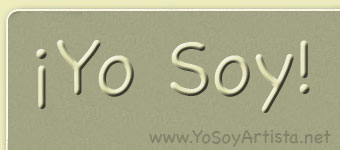
Phone Comp
- Review SFS Kids' The Music Lab
- Review DTMF Tone Generator Applet
- Review and select appropriate song(s) from Touch-Tone Tunes
- Review online video: Touchtone Symphony
- Review online video: Vienna Vegetable Orchestra
- Explore web site: Experimental Musical Instruments
- Select and download free music notation paper
- Obtain copy of instrument-making book, such as Making Musical Instruments with Kids: 67 Easy Projects for Adults Working with Children or explore a home-made instrument web site. (One is suggested at the end of this lesson.)
1. Introduce students to a non-traditional instrument.Play the video: Touchtone Symphony. Ask students:
- Is this music?
- How did the performer learn how to play this tune?
- What are some ways he could capture the musical notes for someone else to play the same song?
- What other electronic devices could be used to make similar sounds?
- What role does mathematics play in this performance?
BUILD KNOWLEDGE
1. Review basic music theory with students. As a large group, in small groups, or at individual computer stations, explore the web site: SFS Kids' The Music Lab. Explain 4/4 and 2/4 time. Review basic notes (whole, half, quarter, eighth). Clicking on “The Basics” sign walks students through a tutorial on this material.
2. Explore music notation using mathematics. Dissect a measure of music, looking at total beats for the measure and the number of beats of individual notes within that measure. For example, in 4/4 music, each measure must contain four beats. Thus, one measure in 4/4 time can hold eight eighth notes (each half a beat), four quarter notes (each 1 beat), two half notes(each 2 beats), or one whole note (4 beats). In 2/4 time, one measure can hold four eighth notes, two quarter notes, or one half note.
3. Experiment with online touch-tone sound application. Use the DTMF Tone GeneratorApplet. Give students time to play random notes.
4. Provide students with touch-tone musical notation for one or more pre-selected songs.(You may wish to provide this as a printed page from the online resource.) Ask them if they can determine the time (4/4, 2/4, or something else).
NOTE: Explain to students that this exercise should only be done on the touch-tone simulator. Do not do this with a real phone, as it may result in charges.
APPLY
1. Create original touch-tone compositions. Divide the class into small working groups. Assign some groups 4/4 time (four beats per measure) and other groups 2/4 time (two beats per measure). Provide students with musical notation paper. Ask them to create an original composition (not a re-creation of a known song). Ask them to record the notes as touch-tone numbers on the musical notation paper. Allow them to create their own notation for various lengths of notes, as necessary. Check the work of each group for understanding of the assignment before moving on.
2. Explore other non-traditional musical instruments. Show the video: Vienna VegetableOrchestra. Ask students: What defines an instrument (something that can be used to produce musical tones or sounds)? Do instruments have to be intricate or complicated?
3. Explore the classroom for “found” instruments. Allow students to be creative and innovative. (Instruments can be paint brushes, fluttering pages of a book, the pencil sharpener, crayons inside a coffee can, etc.) Instruments can also be found on them (zippers, clapping hands, etc.) Discourage them from using any traditional instruments you may have in the classroom.
4. Add more instruments to the original compositions. Ask student groups to add more instruments to their touch-tone compositions. Ask them: How would you note these new additions on the musical notation paper?
REFLECT
1. Perform the original compositions. Ask each group to perform its original piece.
2. Discuss and critique the performances. Ask the audience to critique the performance. You may need to guide them with questions:
- Was the group successful in using the touch-tone simulator as an instrument?
- What other instruments did they use?
- Was the group able to work together?
- What did they do well?
If possible, you may want to videotape the performance for each group to watch itself.
3. Ask each student to perform a self assessment. Use the provided handout entitled 'Self Assessment' found within the Resource Carousel.
ASSESS
Assess your student's work using the 'Assessment Rubric' handout located within the Resource Carousel.
The National Standards For Arts Education:
Music
Grade K-4 Music Standard 2 : Performing on instruments, alone and with others, a varied repertoire of music
Grade K-4 Music Standard 3 : Improvising melodies, variations, and accompaniments
Grade K-4 Music Standard 5 : Reading and notating music
Grade K-4 Music Standard 7 : Evaluating music and music performances
Grade K-4 Music Standard 8 : Understanding relationships between music, the other arts, and disciplines outside the arts
Mathematics
Math Standard 1 :
Uses a variety of strategies in the problem-solving process
Math Standard 2 :
Understands and applies basic and advanced properties of the concepts of numbers
Language Arts
Language Arts Standard 8 :
Uses listening and speaking strategies for different purposes